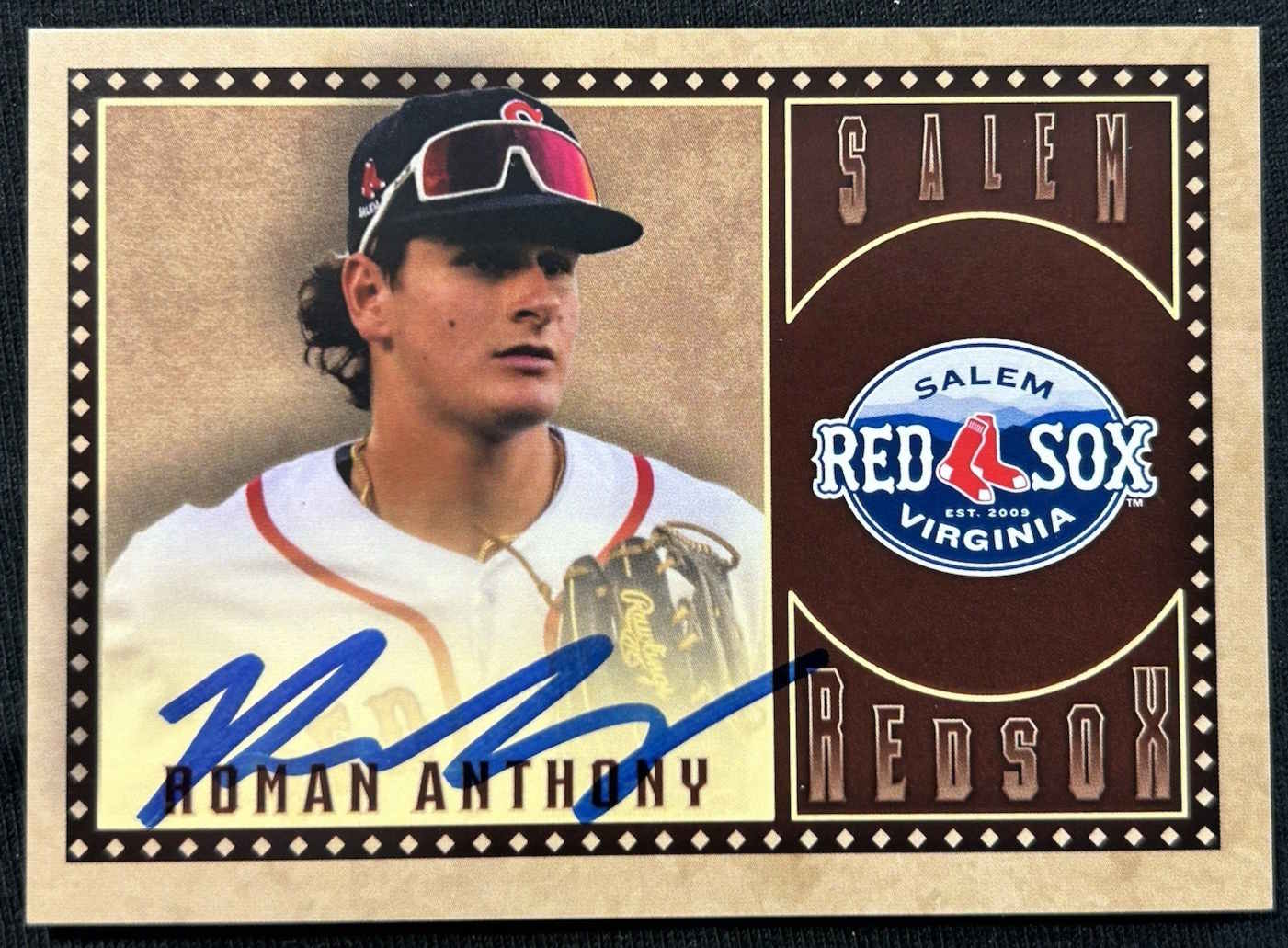

We have all been there. You invest significantly in a rookie, just to find that their cards are worthless a couple of years later. Here is an overview of the biggest baseball prospect busts, and some tips on how to avoid investing in the next one.
In principle, investing in rookie cards of baseball’s top prospects is simple. First, a Player gets taken with a high draft pick and is deemed a “top prospect.” Then, you stock up on his rookie cards. Finally, he tears through the minors, bursts onto the major league scene as a star, and ends up in Cooperstown.
Meanwhile, your early investment in his cards garners a significant return on your investment. You watch the player’s Hall of Fame induction from the deck of your yacht, which you named “Gem Mint .”
Some players take this dream path. Ken Griffey Jr. comes to mind. But most players don’t. Some have long careers but aren’t stars, or at least not for long. Others get hurt after a few years, and some are just all-out busts.
What do we mean by “biggest bust in baseball history”? No, we’re not talking about Morganna, the Kissing Bandit.

We do not consider Morganna to be a bust. Look for her autos on eBay.
No, in his case, we’re talking about highly-touted prospects, often high draft picks, who never find prolonged success. In our case, these players are often associated with a rookie card or highly desirable cards, raise in value, and then drop in value along with the player’s career.
Numbers make up the basis for our understanding of baseball. However, the game is played by flesh and blood humans. They get hurt, have self-doubt, or simply can’t adapt to the majors. After all, scouting is an imperfect science. That player who looked terrific as a teenager may not look so hot against more advanced competition.
For this reason, Investing in prospects is dangerous. While the latest class of top rookies always sounds like “sure things,” that is misleading. Most highly rated prospects don’t become superstars.
To illustrate this, take a look at the 57 first overall picks list since the draft started in 1965. Of those 57, four are Hall of Famers: Ken Griffey Jr. (1987), Harold Baines (1977), and Chipper Jones (1990), and Joe Mauer (2001). A few others have a chance to join them someday, including Bryce Harper, and maybe eventually Alex Rodriguez (he’d be in already if not for the PED thing).
The vast majority of prospects don’t go on to become stars. Some have long and successful careers, like Rick Monday, the first #1 overall pick back in 1965. Others do well for a time, then drop off.
Generally speaking, a successful career for a top prospect is far less flashy than the consensus suggests. For example, many “bust” lists include highly-touted prospect JD Drew. That’s absurd. He played parts of 14 years in the majors and put up a .278/.384/.489, good for a .873 OPS and a 125 OPS+. His 44.9 WAR represents a huge success and something any team should be thrilled to get out of their top prospect.
So, busts happen. They are made worse for card collectors because rookie cards have been the focus of the hobby for decades. As players get hyped, their cards get hyped, go up in value, and then crash along with the player. This is even more of an issue for ultra-modern collectors as players come up with so much hype that their cards are never “inexpensive”. Many parallels and autographs of players in AA somehow sell for more than rookie cards of Hall of Famers. The hype machine is real and its intense.
Before the rookie card craze, in the second rookie draft in 1966, the New York Mets drafted catcher Steven Chilcott out of High School. Unfortunately, Chilcott never made the majors and retired by 24. So who was the player selected second in that draft? Future Hall of Famer and “Mr. October” Reggie Jackson.

The Mets picked Chilcott instead of Reggie Jackson. Look for “Mr. October” rookie cards on eBay.
Baseball can be a cruel game sometimes. Chilcott is one of two first overall selections from the draft to never make the major leagues before retiring. The other? We’ll get to him in a bit!
So, who are the biggest busts in baseball card history? We’ll count down our top 10, with the caveat that this is a very subjective topic. You wouldn’t be wrong if you want to sub in a Sam Horn, Jerome Walton, Eric Antony, or other options.
However, being a bust doesn’t necessarily mean low card values, especially for some of the older cards. Interestingly enough, many of these cards have low PSA population rookie cards, making them a challenge to find in top graded slabs.
In a way, Gregg Jefferies doesn’t belong on this list. He played in parts of 14 seasons and put up 19.5 career WAR. He was an all-star twice and even put up a 5.1 WAR season in which he hit .342/.408/.485 at age 25.
But Jefferies was SO hyped that by that age 25 season, he was already considered a bust. He hit .326, .353, and .367 in the minors going into the 1988 season when his Donruss, Fleer, and Score rookie cards were released. Then, he hit .321/.364/.596 after a late-season call-up to the majors, further fanning the flames.
Despite being released in massive quantities, people bought the cards like crazy, sometimes in lots of 50 or 100 (that might have been a clue that they wouldn’t hold their value). When he didn’t immediately become a superstar, the cards precipitously dropped in value, despite Jefferies putting up performances around the league average.
Jefferies rookie cards are in 1988 products, and they remain low pop, as Jefferies star had already fallen by the time gradings star was starting to rise. Recent comps show prices in the $75-100 range in a PSA 10.
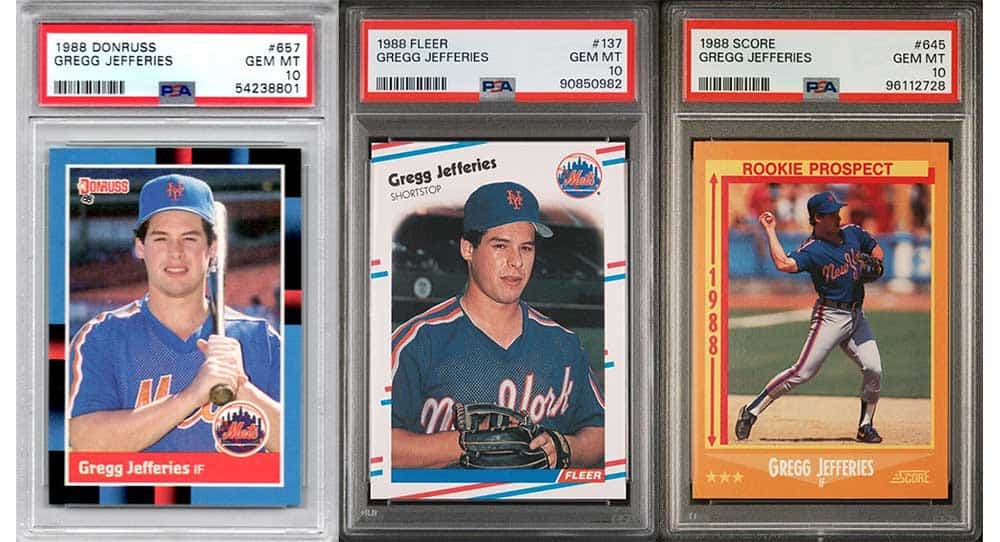
| Year/Set | Total PSA Pop | Recent Sale Pop | Recent Sale Price |
|---|---|---|---|
| 1988 Donruss Gregg Jefferies #657 | 222 | PSA 10 =109 | PSA 10 = $100 |
| 1988 Fleer Gregg Jefferies #137 | 131 | PSA 10 = 56 | PSA 10 = $75 |
| 1988 Score Gregg Jefferies #645 | 116 | PSA 10 = 64 | PSA 10 = $80 |
Look for Greg Jefferies Rookie Cards on eBay
Mark Prior was drafted #2 overall in the 2001 draft. At first, he excelled. In 2003, Mark went 18-6 with a 2.43 ERA in his first full season and finished 3rd in the Cy Young voting. Furthermore, Prior was an All-Star while leading the Cubs to the NLCS.
As you can imagine, demand for his 2002 rookie cards went through the roof. The sky seemed the limit for the young hurler, who teamed with Kerry Wood to give the Cubs a dominating young 1-2 in their rotation.
But injuries, possibly brought on by overuse, began to plague the pitcher. They robbed Prior of appearances and eventually of effectiveness. The beleaguered pitcher made his last big league appearance at 25. Prior attempted a comeback at age 29 but retired after a few years pitching off-and-on in the minor leagues.
Prior appeared on a shocking 225 cards in 2002, giving collectors many options for adding a rookie card to their collection. Many regretted it.

| Year/Set | Total PSA Pop | PSA 10 Pop | Recent Sale Price |
|---|---|---|---|
| 2002 Bowman #274 Mark Prior | 16 | 0 | NA |
| 2002 Bowman Chrome #247 Mark Prior | 72 | 29 | NA |
| 2002 Leaf Mark Prior #169 | 7 | 3 | NA |
Oh, the sad tale of Matt Bush. Drafted #1 overall by the San Diego Padres as a shortstop, probably as a cost-savings move by the Padres. He struggled mightily and converted to pitching in 2007. While he eventually made his big league debut at age 30, it would have been too little too late, even if his only issues were on the field. While he pitched in over 200 games in his career, he was worth only 1.8 WAR for his career.
Unfortunately, baseball failure wasn’t the worst of Bush’s problems. In addition, substance abuse, drunk driving, and criminal activity led to Bush’s incarceration.

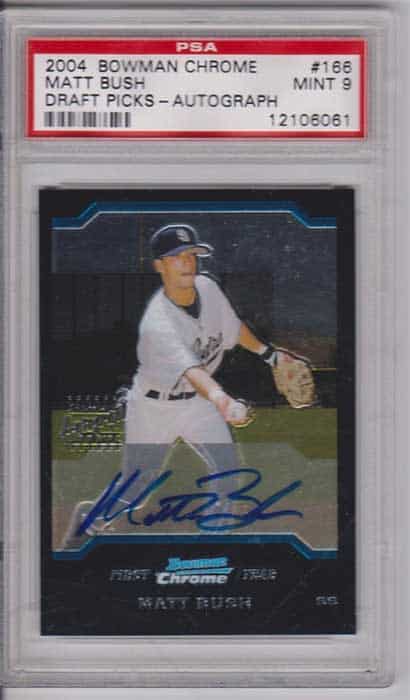
| Year/Set | Total PSA Pop | PSA 10 Pop | Recent Sale Price |
|---|---|---|---|
| 2004 Topps Chrome Rookie & Traded #T71 Matt Bush | 20 | 13 | NA |
| 2004 Bowman Chrome Draft Picks & Prospects #BDP166 Matt Bush AU | 32 | 5 | NA |
| 2004 Bowman Heritage #205 Matt Bush | 3 | 0 | NA |
Shawn Abner was taken 1st overall in the 1984 draft by the Mets, right out of high school. The outfielder was traded to the Padres and made his major league debut for them in 1987. Shawn played parts of six seasons and hit .227/.269/.323 in 392 games. Sadly for the Mets, many regular major leaguers were taken later in the first round of the 1984 draft, including Mark McGwire at #10. Like other players on this list, Abner spent time in prison.
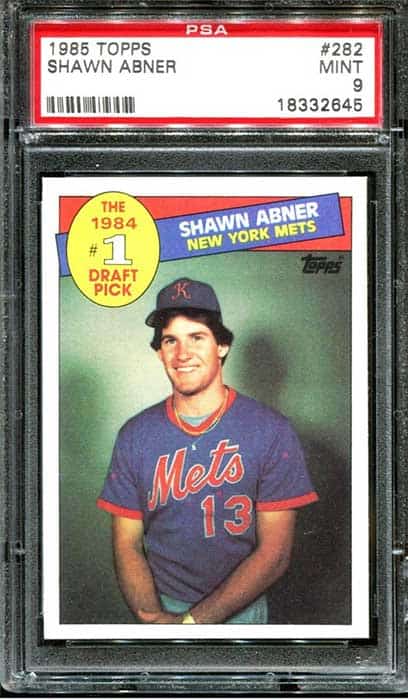
| Year/Set | Total PSA Pop | PSA 10 Pop | Recent Sale Price |
|---|---|---|---|
| 1985 Topps #282 Shawn Abner | 31 | 3 | NA |
| 1985 Topps Tiffany #282 Shawn Abner | 13 | 2 | NA |
The sad tale of Shawn Abner is made stark by the promise on his face. Look for his cards on eBay.
Joe Charboneau was a quirky player who quit minor league ball to play softball. He once got stabbed by a fan in Mexico, drank beer through his nose, and allegedly fixed a broken nose with a pair of pliers. His nose saw plenty of action. But he played well, too, and was the 1980 American League Rookie of the Year.
Unfortunately, injuries set in, and Joe holds the record for fewest career games for any Rookie of the Year, with 201. He played his last major league game two short years later.
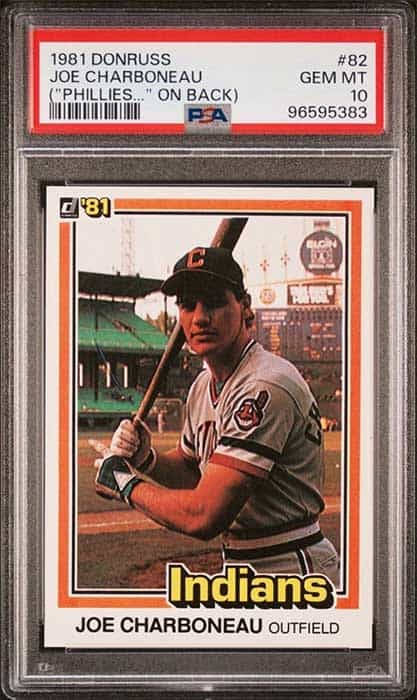
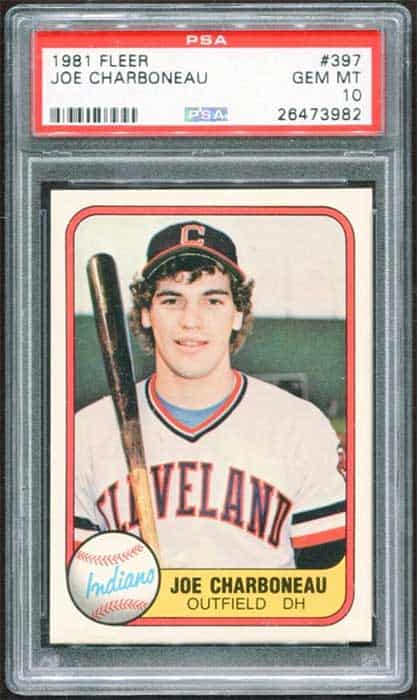
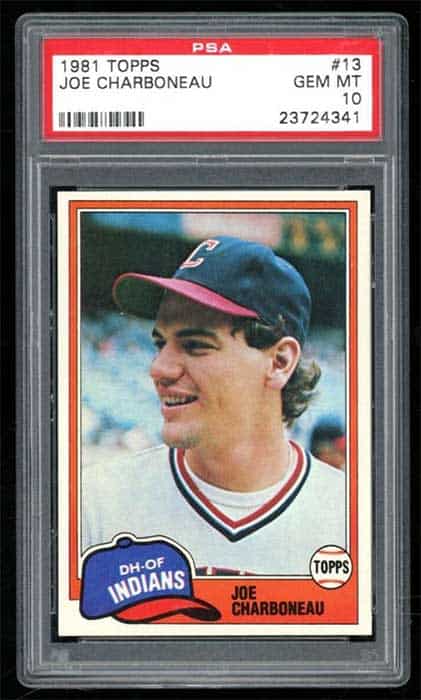
| Year/Set | Total PSA Pop | PSA 10 Pop | Recent Sale Price |
|---|---|---|---|
| 1981 Donruss #82 Joe Charboneau | 60 | 24 | PSA 10 = $100 |
| 1981 Donruss #82 Joe Charboneau ER | 23 | 5 | NA |
| 1981 Fleer #397 Joe Charboneau | 106 | 70 | PSA 10 = $25-30 |
| 1981 Topps #13 Joe Charboneau | 315 | 16 | PSA 10 = $270 |
After winning the National Collegiate Pitcher of the Year Award, Mark Appel was a solid contender to go #1 overall in the 2012 draft. However, he dropped to #8 due to signability concerns. Unfortunately, those concerns proved correct, and he re-entered the draft in 2013 and signed with the Astros.
The pitcher was traded to the Phillies but struggled and stepped away from baseball in 2017. He returned to the game in 2021 at age 29 and pitched in the minor leagues. However, his big league career amounted to just 6 relief appearances. Sadly, he’ll never live up to the initial high expectations.
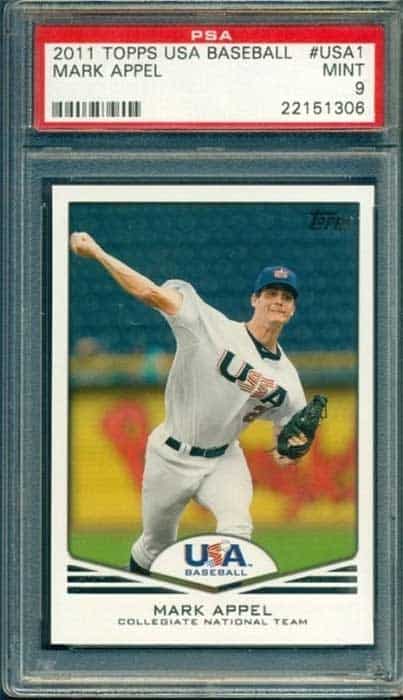
| Year/Set | Total PSA Pop | PSA 10 Pop | Recent Sale Price |
|---|---|---|---|
| 2011 Bowman Platinum Team USA Autographs #USA-MA Mark Appel | 1 | 0 | NA |
| 2011 Bowman Sterling Dual Autographs #BSDA-AB Mark Appel / DJ Baxendale | 4 | 3 | NA |
| 2011 Topps USA Baseball #USA-1 Mark Appel | 10 | 6 | NA |
Brandon Wood, drafted #23 in the 2003 draft, was ranked the #3 prospect in baseball in 2006. Wood was so primed for stardom that the Angels let Chone Figgins leave as a free agent to open a spot for Wood.
Instead of ascending to stardom, Wood appeared in only 272 games across 5 seasons and hit an anemic .186/.225/.289. Wood is an all-time bust. However, his now-publicized mental health and anxiety struggles may partially explain the outcome. That takes real bravery, and kudos to Wood for sharing.
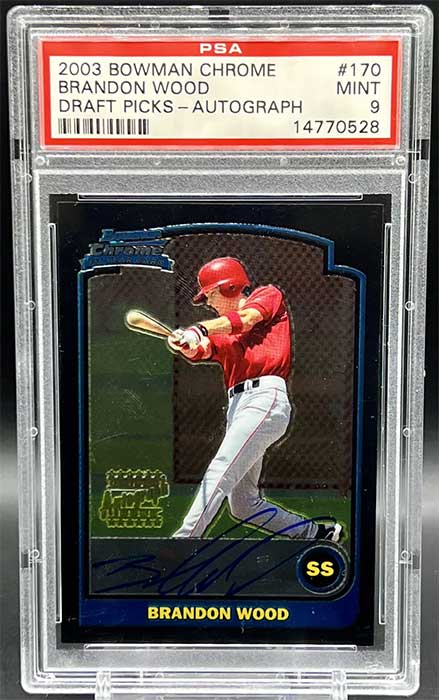
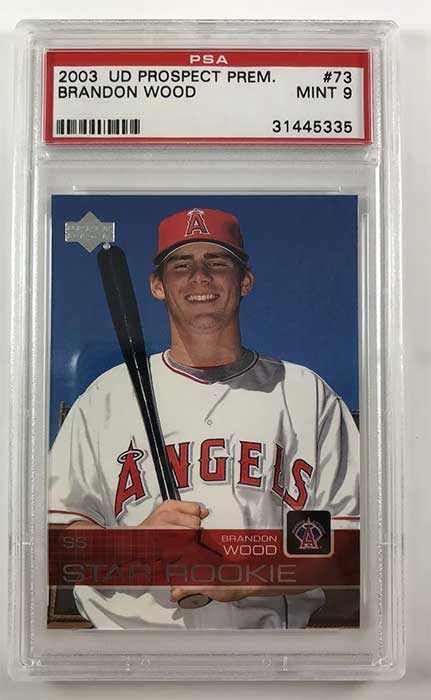
| Year/Set | Total PSA Pop | PSA 10 Pop | Recent Sale Price |
|---|---|---|---|
| 2003 Bowman Chrome DP&P #BDP170 Brandon Wood AU | 105 | 32 | PSA 9 = $25 |
| 2003 Bowman Heritage #252 Brandon Wood | 5 | 0 | NA |
| 2003 Upper Deck Prospect Premieres #73 Brandon Wood | 37 | 15 | PSA 9 = $4 |
Despite being only a 22nd-round draft pick, Maas was the perfect storm of hype. After an impressive minor league career, he debuted in late June of 1990 by setting records for fastest for fewest at-bats to 10 (72), 13 (110), and 15 (133) home runs ever. Add in that he did this with the New York Yankees as heir apparent to Don Mattingly, and Maas cards created a collecting frenzy. That is the famed big market effect for you.
He finished that 1990 season with a .252/.367/.535 line in 300 at-bats, earning a .902 OPS and 150 OPS+. Maas also hit 21 home runs and finished second in the American League Rookie of the Year voting.
But the momentum didn’t last. In 1991 Kevin hit 23 home runs but hit just .220/.333/.390. By 1995, he played his final major league game at age 30.

| Year/Set | Total PSA Pop | PSA 10 Pop | Recent Sale Price |
|---|---|---|---|
| 1990 Bowman Kevin Maas #440 | 17 | 10 | NA |
| 1990 Leaf Kevin Maas #446 | 116 | 81 | PSA 10 = $30 |
| 1990 Upper Deck Kevin Maas #70 | 52 | 28 | NA |
Some teams are drawn to high school pitchers. The potential ceiling can be high, but the risk is even higher. For example, Todd Van Poppel was a candidate to go 1st overall in the 1990 draft. However, he refused to sign for the Atlanta Braves. Signability concerns dropped him to the #14 pick by the Oakland A’s. The Braves, by the way, did OK for themselves. Using that #1 overall pick for franchise icon and Hall of Famer Chipper Jones.
Van Poppel signed a major league contract with the A’s, which limited his chances to pitch in the minor leagues. That lack of seasoning hurt his development. Despite spending 11 seasons in the majors, he never came near his potential.
His 1991 rookie cards were the hottest in the business. However, when his career did not take shape, they quickly fell into the commons bin.
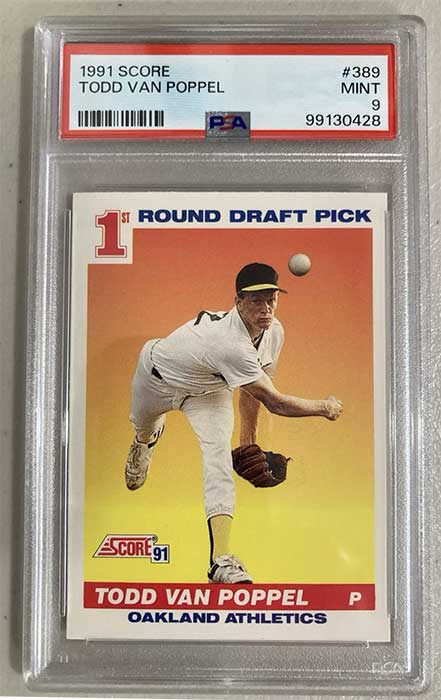
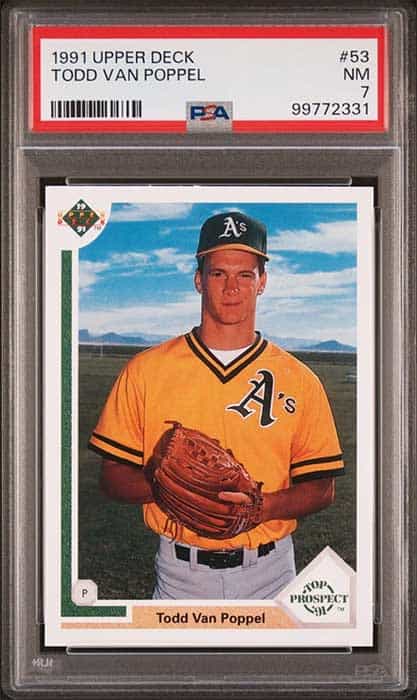
| Year/Set | Total PSA Pop | PSA 10 Pop | Recent Sale Price |
|---|---|---|---|
| 1991 Bowman Todd Van Poppel #218 | 1 | 0 | NA |
| 1991 Score Todd Van Poppel #389 | 11 | 2 | NA |
| 1991 Upper Deck Todd Van Poppel #53 | 53 | 6 | PSA 9 = $25 |
Todd Van Poppel is an icon of unfulfilled promise. Look for his autos on eBay.
Steven Chilcott, was one of two #1 overall picks never to make the big leagues? Taylor was the other.
Drafted #1 overall in the 1991 draft by the New York Yankees and quickly anointed the #1 prospect in baseball, Taylor was a card collecting sensation. His 1992-issue rookie cards were hugely popular with collectors. As a result, they shot up “hot lists” and increased in value.
Despite a fastball that touched 98 or 99 miles per hour, Taylor was raw and had a lot to learn in the minor leagues. Unfortunately, he got into a fight in 1993 and severely injured his shoulder. After that, the pitcher kicked around the minors but never found success. Taylor never pitched above Double-A ball and was out of the game by age 28.
Like many other players on this list, Taylor’s problems didn’t end on the baseball field. In 2012 he was arrested and convicted of drug trafficking.


| Year/Set | Total PSA Pop | PSA 10 Pop | Recent Sale Price |
|---|---|---|---|
| 1992 Bowman #124 Brien Taylor | 14 | 9 | NA |
| 1992 Topps #6 Brien Taylor | 62 | 43 | PSA 10 = $20 |
| 1992 Topps Gold #6 Brien Taylor | 24 | 10 | PSA 10 = $80 |
| 1992 Topps Gold #793 Brien Taylor AU | 73 | 48 | PSA 10 = $80-100 |
Predicting which prospects will make it big and which will bust is almost impossible. No matter how much research you do, you’ll miss more often than hit. To make it worse, nowadays, the prices of packs and higher-end RCs such as autographs and parallels are rising. Therefore, misses get expensive.
So, do not play this game expecting a hefty profit. But, on the other hand, if you enjoy the game, go for it. But, of course, the entertainment value has to be considered. It is a hobby, after all.
If the risk vs. reward of prospects doesn’t sit well with you, there are other approaches. I tend to let time sort things out. It is an oddity of the card collecting world that rookie card prices often peak right after release. For whatever reason, potential often trumps performance in the hobby market.
Take a look at Ken Griffey Jr. The prospect went immediately into superstardom and the Hall of Fame. But, unfortunately, his key rookie card, the iconic 1989 Upper Deck card, doesn’t sell for all that much more in the raw form now than it did in 1989. The massive overproduction and over grading of his cards play a key role in this case.
I take a “wait and see” approach and wait to buy rookie cards once a player is established. Once the player is beyond “prospect” or “young superstar” and into “veteran star” status, their rookie cards are often still affordable enough. Especially if you didn’t spend your hobby dollars stocking up on Brien Taylor and Todd Van Poppel cards.
Sure, you’ll miss the occasional Mike Trout in this approach. But in most cases, it will pay off.
You sometimes see a similar market softening for players with a long decline phase. Recent examples would be Albert Pujols before his late-season resurgence with the Dodgers and Miguel Cabrera before closing in on career milestones.
In addition, cards sometimes see a softening 2-3 years after the end of their careers. Why that time frame? It’s long enough for them to be out of the public eye, but before their Hall of Fame ballot reignites interest.
Card Investing Basics: The Time To Buy Is When Others Are Selling
It is no coincidence that many of these busts come to us from the “junk wax” era of 1987-1994. Times of irrational exuberance tends to lead to, well, irrational behavior. There are parallels to the current era of collecting, something to be well aware of. We can learn from history.
Chasing the promise of the next big prospect has been a big part of the hobby for ages. But, it’s a hobby, so do what you enjoy. The critical thing to remember is that risks, costs, potential rewards, and enjoyment to weigh when deciding your approach to prospects.
And hey, even when you pick wrong on a prospect, you gain something. The stories of caches of Brian Taylor, Mark Prior, and Gregg Jefferies cards now worth pennies make up some of the great stories and memories many have of the hobby. That has value too!
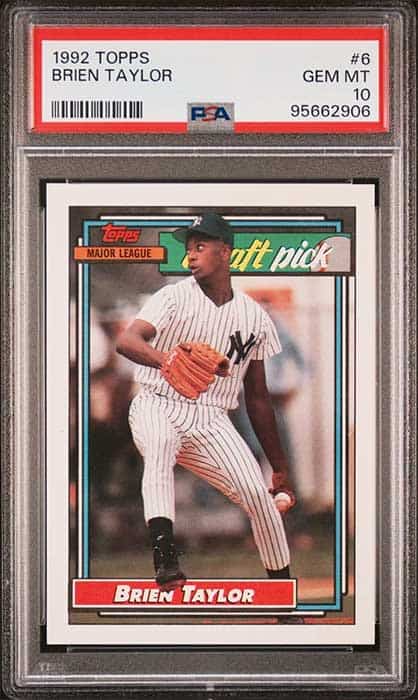
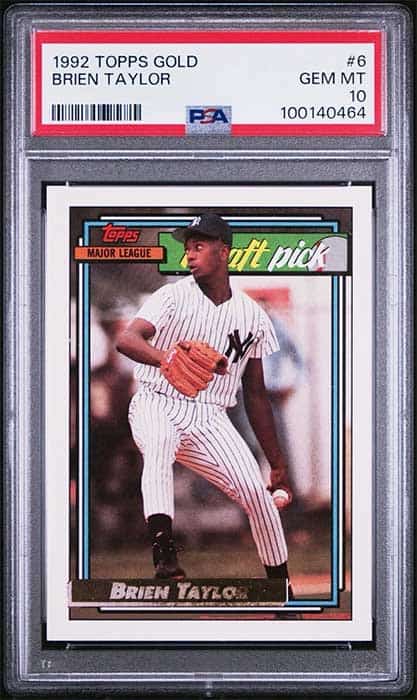
2025 Topps All Star Game Mega Box Product Review
Ripping the new Topps All Star Game mega box.
Is this new sports card store the BEST VALUE around?
I Tested eBay Auction Promotions So You Don’t Have To!
I deep-dove on Fanatics Collect so you don't have to (but should you?)
Panini is launching a WNBA Product at $30,000!?
Topps Chrome 2024-25 Basketball: Honest Review and Notes
Did you know this SECRET about PSA slabs? #sportscard #tcg



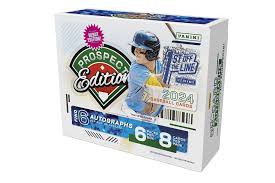
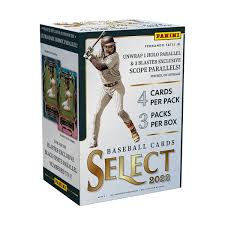
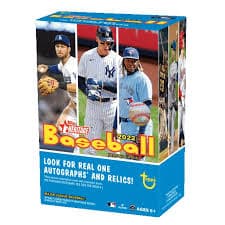
2022 Topps Heritage Baseball Blaster Box Configuration: 7 Packs per Box – 9 Cards per Box. Plus 1 extra pack.
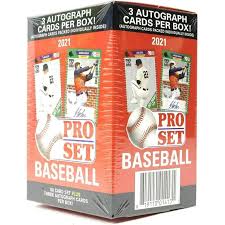
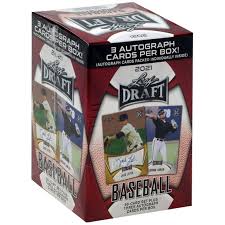
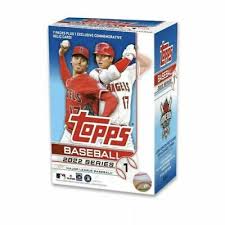


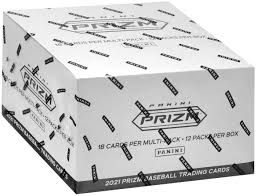

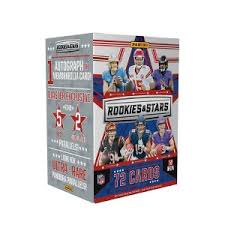

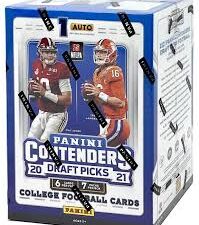
Keep up on breaking Sports Card News, our latest articles, product specials and exclusive content with expert analysis of hobby trends.

© Copyright 2025 - All rights reserved Cardlines.com / Media Techs LLC - Sports Card News, Reviews, Releases and BREAKS - #thehobby.
Important: When you click on links to various merchants on this site and make a purchase, this can result in this site earning a commission. Affiliate programs and affiliations include, but are not limited to, the eBay Partner Network.
The Ultimate 2024 Football Card Brand Tier List (Panini vs. Topps and more!)
Cardlines 9 hours ago